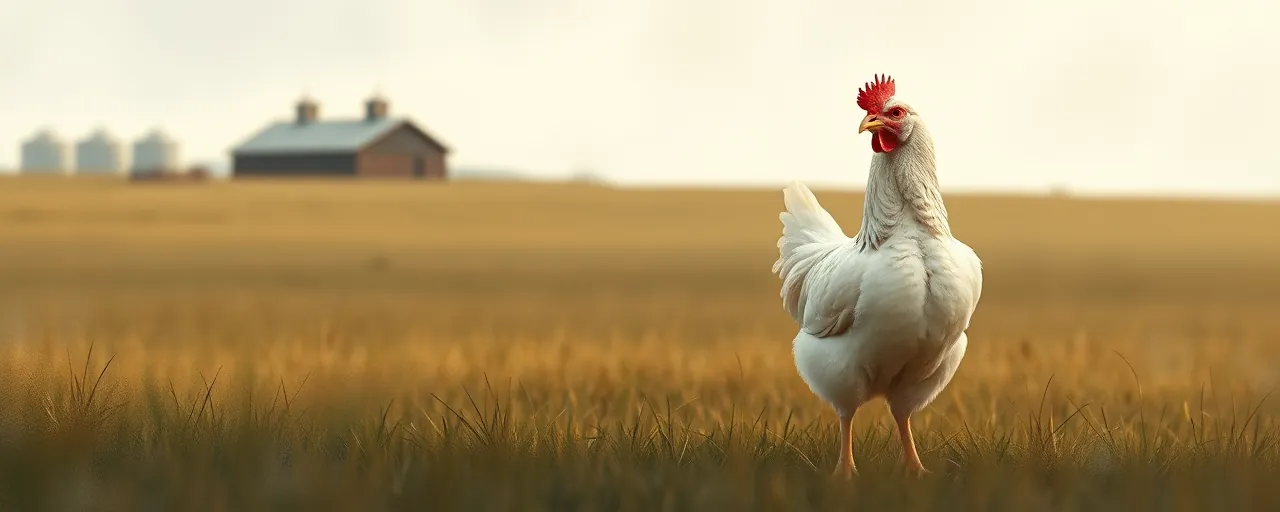A Devastating Blow to Ohio's Farms
In the heart of Darke County, poultry farmers are grappling with an unprecedented crisis. Since December 2024, Highly Pathogenic Avian Influenza (HPAI) has swept through Ohio, claiming 15.5 million birds across 76 commercial farms. The state, a powerhouse in egg production, now accounts for nearly half of the nation’s poultry losses this year. Farmers like those at Weaver Eggs in Versailles have faced the grim task of depopulating entire flocks to halt the virus’s spread.
The outbreak’s ripple effects extend far beyond the farm gates. Grain suppliers, processors, and local businesses tied to Ohio’s $10 billion poultry industry are feeling the strain. Rising egg prices and supply chain disruptions have sparked concern among consumers, while farmers confront both financial and emotional tolls. The crisis has thrust Ohio into the spotlight, prompting urgent action from state and federal leaders.
Governor Mike DeWine, joined by U.S. Agriculture Secretary Brooke Rollins, recently visited Versailles to meet with affected producers. Their tour of Weaver Eggs and discussions with local farmers underscored the gravity of the situation. Yet, amid the losses, there are signs of resilience, with collaborative efforts aiming to stabilize the industry and prevent future outbreaks.
The Scale of the Outbreak
Ohio’s 2025 HPAI outbreak is the most severe in the nation, with 44% of U.S. poultry losses concentrated in the state. Darke and Mercer counties, key poultry hubs, have been hit hardest. The virus, spread primarily by wild birds, has proven relentless despite rigorous biosecurity measures. Since October 2024, global HPAI cases have surged, with over 11 million birds lost worldwide in February 2025 alone.
The economic impact is staggering. Ohio’s poultry sector, which produces 11.8 billion eggs annually, faces revenue losses and rising costs. The culling of 13.5 million laying hens has disrupted supply chains, driving up egg prices and prompting temporary imports to stabilize markets. Beyond economics, the outbreak raises concerns about zoonotic risks, especially after a farm worker contracted HPAI earlier this year.
Government Response and Farmer Support
State and federal officials have mobilized to address the crisis. The USDA’s five-point plan, rolled out under Secretary Rollins, includes $1.4 million in grants for Ohio’s disease response and $218 million in direct payments to farmers through the Emergency Commodity Assistance Program. These funds aim to offset losses and bolster biosecurity, though some farmers say aid delivery needs to be faster.
Governor DeWine’s administration has leaned on Ohio’s One Health initiative, which coordinates local health departments for contact tracing and public education. Ohio State University Extension has also stepped in, offering biosecurity training and economic impact assessments. While these efforts have helped, the virus’s persistence underscores the need for long-term solutions, including vaccine research, which remains a priority for the USDA.
Voices From the Ground
Farmers at the Versailles meeting shared raw accounts of their struggles. For many, the outbreak has meant not just financial hardship but the loss of livelihoods built over generations. One producer described the emotional weight of culling healthy birds to prevent further spread, a measure required to protect the broader industry. Others expressed frustration with the pace of federal aid, though they welcomed the direct engagement from DeWine and Rollins.
On the other side, policymakers argue that the rapid deployment of funds and biosecurity resources shows a commitment to farmers. The USDA points to its streamlined application processes and import agreements as evidence of a proactive response. Yet, some in the industry call for more focus on prevention, including accelerated vaccine development to reduce reliance on culling.
Innovations on the Horizon
Amid the crisis, Ohio is looking to technology for solutions. During their visit, DeWine and Rollins toured a dairy farm showcasing the 360 Rain system, a self-driving irrigation tool that applies manure directly to crop roots. This innovation, part of the H2Ohio initiative, aims to reduce nutrient runoff, a key contributor to water quality issues. By managing manure more effectively, farmers can protect waterways while sustaining productivity.
Sustainable agriculture is gaining traction across the state. Precision farming tools, like IoT sensors and AI-driven analytics, help farmers monitor soil and crop health in real time, reducing waste and boosting yields. These advancements align with broader efforts to make Ohio’s agriculture more resilient, especially as climate change and disease outbreaks pose growing threats.
Balancing Economic and Environmental Goals
The HPAI crisis has sparked a broader conversation about the future of farming. Some stakeholders advocate for stronger environmental protections, arguing that sustainable practices can mitigate risks like nutrient runoff and disease spread. Others prioritize economic stability, emphasizing the need for deregulation and market-driven solutions to keep food affordable.
Ohio’s H2Ohio program reflects an attempt to bridge these goals. By incentivizing practices like smart manure management, the initiative supports both farmers and the environment. However, scaling these innovations requires investment, and debates persist over how to fund them without burdening producers already strained by the outbreak.
Looking Ahead
Ohio’s poultry farmers face an uncertain road, but the response to the 2025 HPAI outbreak shows a sector determined to adapt. Federal and state support, combined with technological innovation, offers a path toward recovery. Still, the crisis has exposed vulnerabilities in the food supply chain, from reliance on a few large farms to the challenges of controlling a virus spread by wild birds.
As Ohio rebuilds, the lessons from this outbreak will shape its agricultural future. Farmers, policymakers, and researchers are united in their push for resilience, whether through vaccines, sustainable practices, or stronger safety nets. For now, the state’s poultry industry stands as a testament to both the fragility and tenacity of those who feed the nation.
